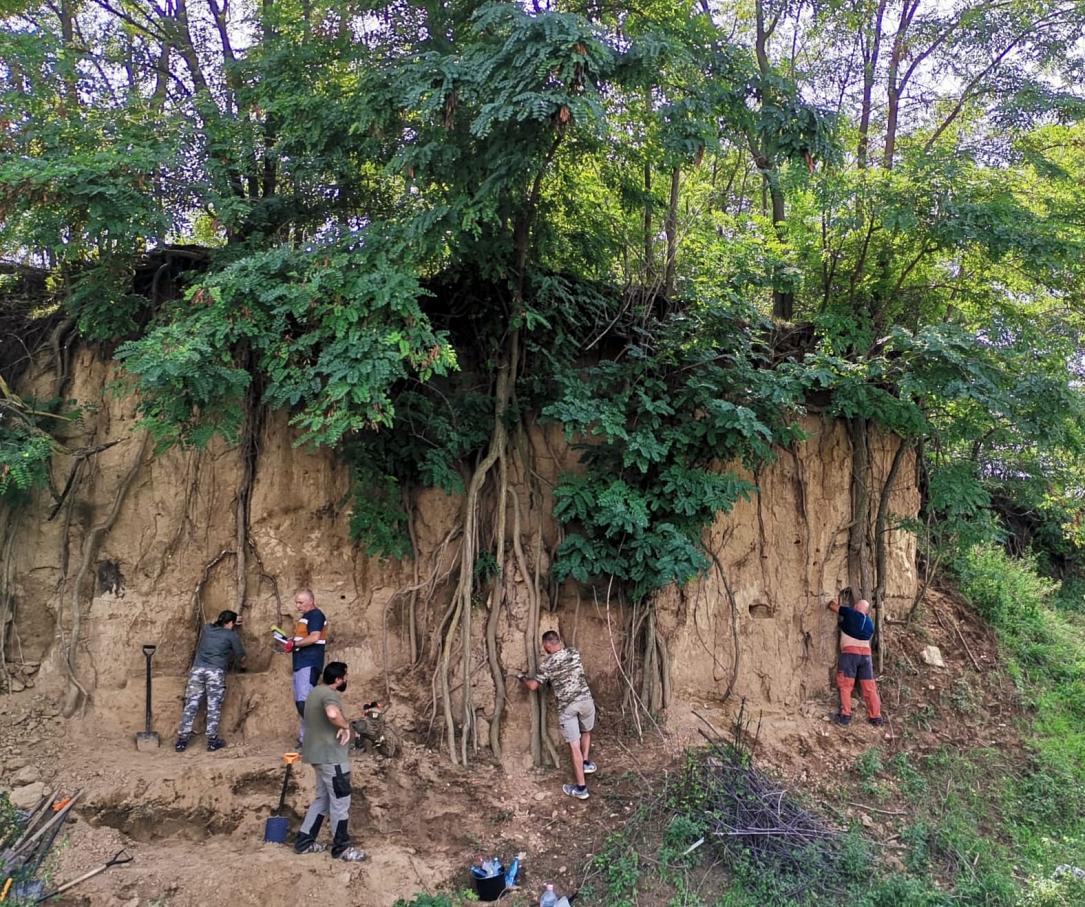Unique paleolithic discovery made in Romania's Vrancea county



A Paleolithic archaeological site, which could be unique in Romania, was discovered in a clay pit at Bolotești, in the village of Vităneștii de sub Măgura, as part of activities to assess the archaeological potential of the area. Agerpres spoke to archaeologist Mădălina Stănescu from the Museum of Vrancea.
The archaeological research was carried out by a team from Valahia University in Targoviste and the Museum of Vrancea, including two university professors, four Ph.D. students, two volunteers, and several students.
"Our discovery is important both for the territory of Vrancea county and at the national level, given the fact that sites of paleological age, at least in the area, are extremely few and unexploited. It consists of a piece of flint and another fragment, found some five meters into the profile of the clay pit, clearly attributed to the Palaeolithic. We can't place the exact chronology, but dating will tell us which period. The discovery is important because there is a lens of volcanic ash above the piece," said Mădălina Stănescu.
According to the archaeologist, the Palaeolithic is the most difficult to research, as the fragments found can easily be confused.
"Paleolithic sites are the hardest to find. From the Palaeolithic, we usually find only polished stone, stone fragments, blades, and finished tools, which are very small and can be easily confused. The difference between the Paleolithic and other cultures is that we can't do magnetometry, to be able to tell what's in the ground, because they didn't have habitation structures. We might stumble upon a hearth, but we can't know exactly what period it's from. The accuracy of dating in the Paleolithic is a few hundred years. These clay pits are great for researching the Palaeolithic period because the bank is broken and you can see the geological layers and ages," the archaeologist explained.
Mădălina Stănescu told the story of how the discovery was made, which she and her team believe was fortuitous.
"We were looking for the site investigated by a team from the Vrancei Museum in 1995, at the point of the Lake Coast at Vităneștii de sub Măgură. Trying to identify that spot, we got caught in the rain and decided to settle for the night, camping at the edge of the village, near a clay pit. The next day, when we woke up, we decided to check the area, and lo and behold, we found something much more interesting than what we had been looking for. This lens of volcanic ash is extremely important because such important events happened around 30,000 BC. Whether it was the eruption of the Ciomatu massif 30,000 years ago or the Campanian eruption 39,000 years ago, only dating will give us the answer. But this discovery is unique in the country. No Palaeolithic site in the country is so far associated with this lens of ash, as far as we know, and the lens is highly visible, not interrupted by alluvium."
With winter approaching, fieldwork has been halted for the time being and will resume in spring, when archaeologists hope to secure funding from the authorities.
Photo source: Museum of Vrancea's Facebook page)